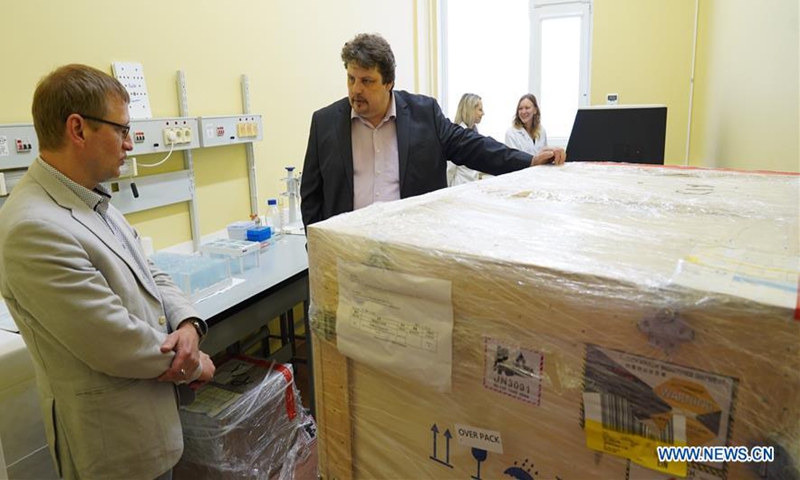China’s Mammoth Foundation in Shenzhen donated key laboratory equipment to a biomedical research center in Latvia on Friday.
Professor Janis Klovins, director of the Latvian Biomedical Research and Study Center, who received the BGI Fire Eye lab equipment on behalf of the center, described the donation as a very important addition to the center’s capabilities in COVID-19 research, specifically viral sequencing.
According to Klovins, with the new equipment, the center’s capacity could be raised to over 200 samples per week from the current 32.
Klovins believed that the Chinese equipment will be highly useful in other COVID-19 research projects as well. It is expected to help with automation of nucleic acids extraction and improvement of work efficiency of Latvia’s virus detection.
Among the 115,461 COVID-19 tests performed in Latvia so far, 1,085 tests have come back positive, according to the latest data released on Friday by the Latvian Center for Disease Control and Prevention.
The donation was coordinated by the Chinese Embassy in Latvia and the Latvian Ministry of Foreign Affairs.
Professor Janis Klovins (front, R), director of the Latvian Biomedical Research and Study Center, stands near the key laboratory equipment donated by China’s Mammoth Foundation and talks with a staff member in Latvian Biomedical Research and Study Center in Riga, Latvia, June 5, 2020. China’s Mammoth Foundation in Shenzhen donated key laboratory equipment to Latvian Biomedical Research and Study Center on Friday. Professor Janis Klovins, director of the Latvian Biomedical Research and Study Center, who received the BGI Fire Eye lab equipment on behalf of the center, described the donation as a very important addition to the center’s capabilities in COVID-19 research, specifically viral sequencing. According to Klovins, with the new equipment, the center’s capacity could be raised to over 200 samples per week from the current 32. (Photo by Janis/Xinhua)



